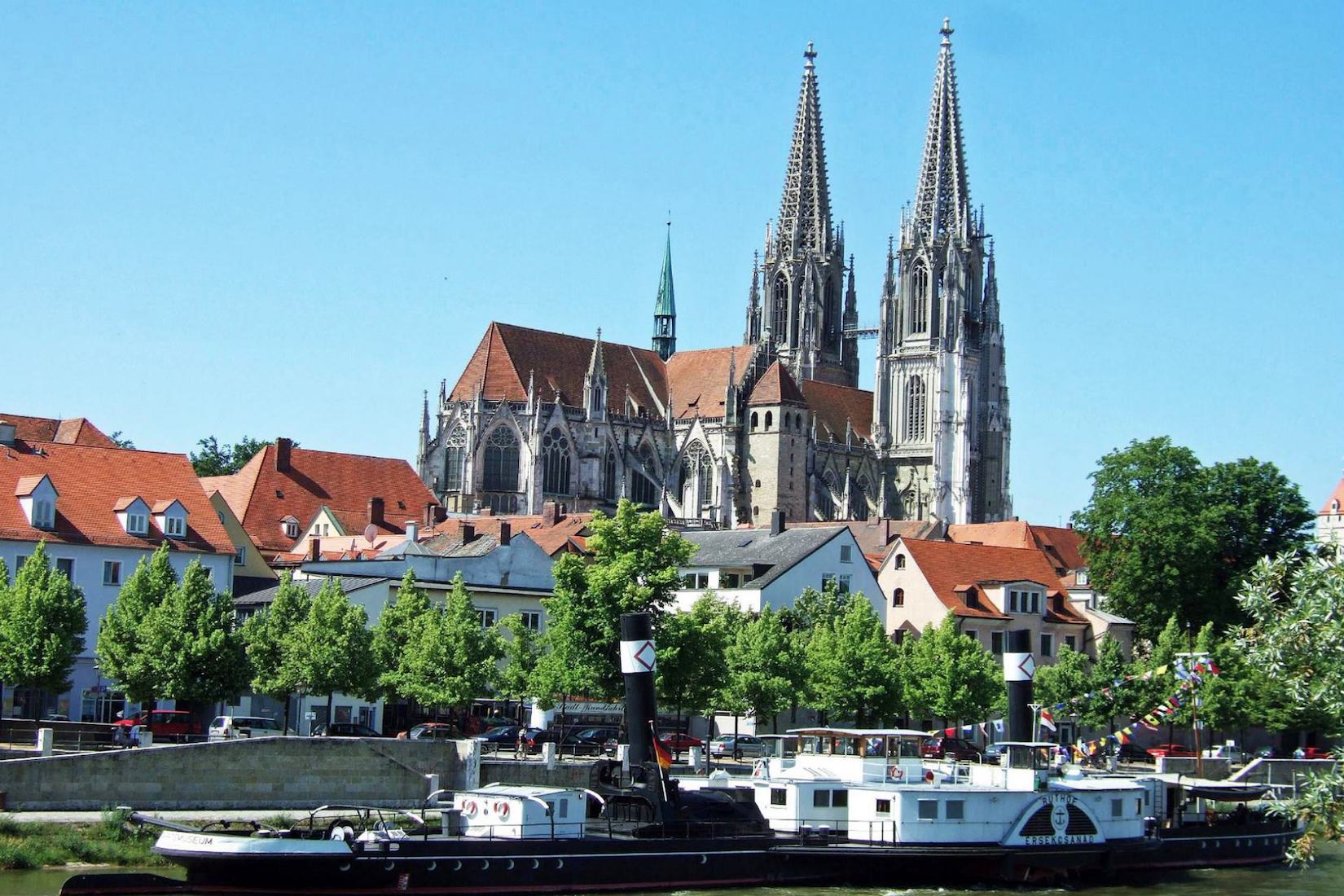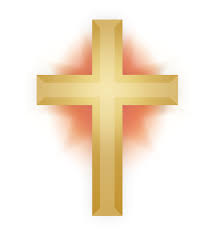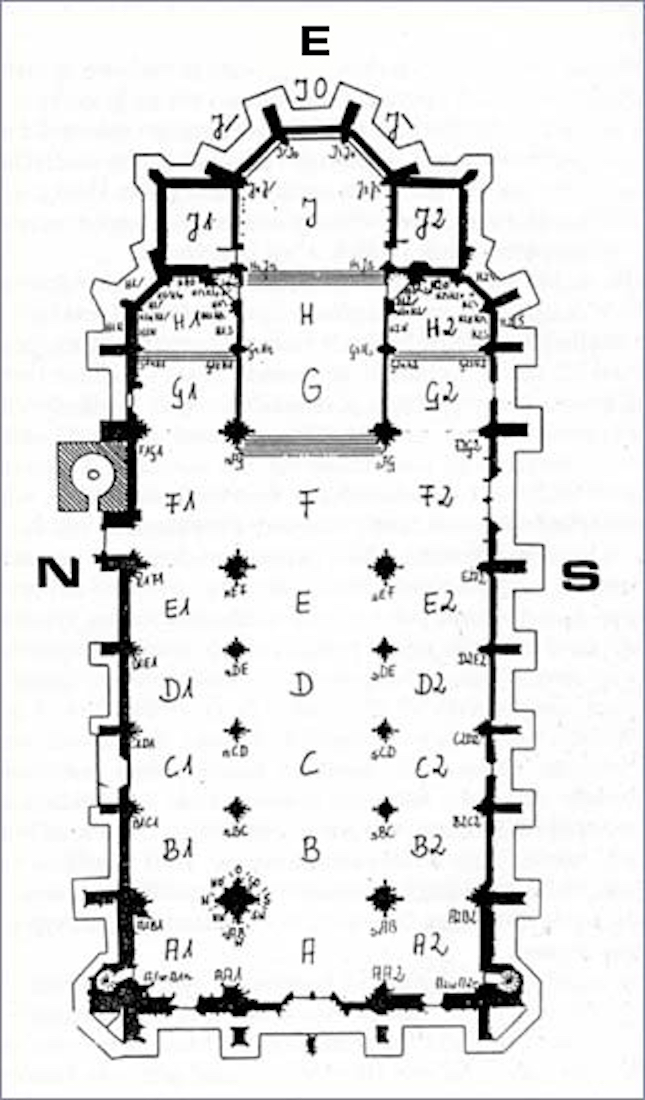ST PETER’S CATHEDRAL
REGENSBURG, GERMANY
PAUL SCOTT
The Cathedral is spacious but has a simple structure. After an external circuit, we shall begin at the back of the nave and cross to the West end of the North aisle (bottom left in sketch). We shall then explore the North aisle and North Choir, followed by the Chancel and Sanctuary (centre top), and then the South Choir and aisle (right hand side). We finish by looking at the Cathedral crypt and Treasury.
A brief history of the Cathedral is given below. However, if you want to begin your tour of the Cathedral immediately, tap / click on START . You can also access intermediate points in the tour by a tap / click on the following links:
NOTE ON MAGNIFYING IMAGES
With this website format the images are large enough for most purposes. If there is a need for greater magnification of an image, go to the identical photo on
https://www.flickr.com/photos/paulscottinfo/albums
and use Command - + (Mac) or Windows - + (Windows).
HISTORY
[Wikipedia]
Regensburg Cathedral (German: Dom St. Peter or Regensburger Dom), also known as St. Peter’s Cathedral, is an example of important Gothic architecture within the German state of Bavaria. It is a landmark for the city of Regensburg, Germany, and the seat of the Catholic Diocese of Regensburg.
History
The original church was called Niedermünster. It was built west of where the current Cathedral stands, and was built around the year 700. Where it was positioned was some distance away from the Porta Praetoria which was a northern gate of Regensburg’s old legionary fortress called Castra Regina. Although it was a tomb for Erhard of Regensburg, it was at first a chapel for a royal family (more specifically a ducal family). Niedermünster burned down in 1273, and because of the good economic status of Regensburg at the time a new Cathedral was able to be constructed.
The architect that took over supervision of the new Cathedral in 1280 was trained in France, and because of this there was an incorporation of French Gothic architectural themes. This included a central nave that divides into three sections, buttresses, vaulting, and two towers over a façade.
By 1320, the three choirs of this Cathedral were ready for use, and between 1385 and 1415 the main entrance to the West was completed. Most of the edifice was finished around the year 1520, and this was also the opening year for the Cathedral.
In the 17th century, the cupola located at the transept’s crossing, along with other sectors of the Cathedral, were renovated in a Baroque style. With this renovation, the frescoes that were created for the All Saints’ Chapel were plastered over until being uncovered in the 19th century. Following this, between 1828 and 1841 the Cathedral underwent a Neo-Gothic renovation, and this was commissioned by King Ludwig I of Bavaria. With this renovation the cupola was demolished and replaced with a quadripartite rib vault. Between 1859 and 1869, the towers as well as their spires were completed, and three years later the Cathedral was fully complete.
The state-run Dombauhütte (Cathedral building workshop) was founded in 1923, for the oversight, maintenance, and restoration of Regensburg Cathedral. One of the organization’s restoration projects occurred during the 2000s. Another project the organization was involved in occurred in the 1980s, where the construction of the crypt mausoleum and archaeological exploration of the centre nave were carried out.




